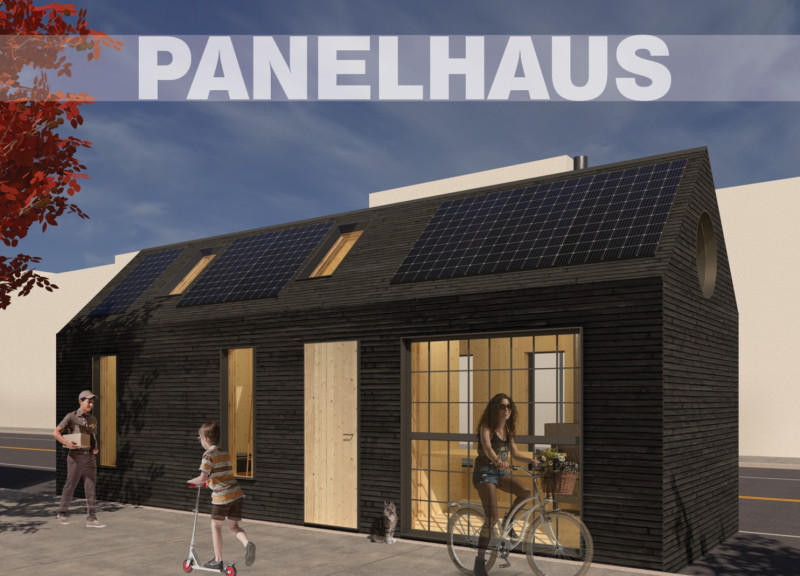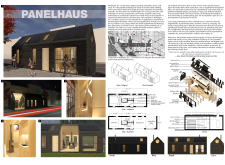5 key facts about this project
The architecture of PanelHaus features a dual-functional layout that accommodates residential living and workspace. This versatility caters to contemporary lifestyles that often require the integration of home and work. The structure promotes community interaction, reflecting a focus on re-establishing connections among inhabitants and their surrounding neighborhoods.
Sustainable Material Selection
PanelHaus employs a thoughtful selection of materials that contribute to its sustainability goals. The use of blackened wood, enhanced through the shou sugi ban technique, not only serves functional purposes such as weather resistance but also provides an aesthetic element that stands out in its urban environment. The natural wood interior, likely composed of spruce or pine, offers warmth and comfort, contrasting with the more rugged exterior.
Solar panels integrated into the design underscore its commitment to energy efficiency, enabling the structure to function independently from non-renewable energy sources. Significant areas of glazing allow natural light to enhance the interior, promoting a connection to the outdoors while maintaining energy efficiency.
Functional Design Elements
The layout of PanelHaus is characterized by compact yet multifunctional spaces. It includes a well-considered kitchen design that maximizes efficiency with minimal spatial demands. Foldable furniture and expandable outdoor decks cater to the need for versatility, allowing users to adapt their living space to different needs throughout the day.
Unique design approaches in PanelHaus include the incorporation of eco-friendly restroom solutions, such as composting systems and water collection provisions, aligning with sustainable practices. Furthermore, the modular nature of the building allows for easy relocation, responding effectively to changing urban dynamics and housing needs.
Through its architectural plans and sections, PanelHaus offers a practical response to urban housing challenges while fostering community engagement and sustainability. For a comprehensive understanding of the design and its innovative features, readers are encouraged to explore the architectural designs and ideas presented within the project documentation. Detailed architectural plans and sections provide further insight into the thoughtful approach and design outcomes of PanelHaus.























